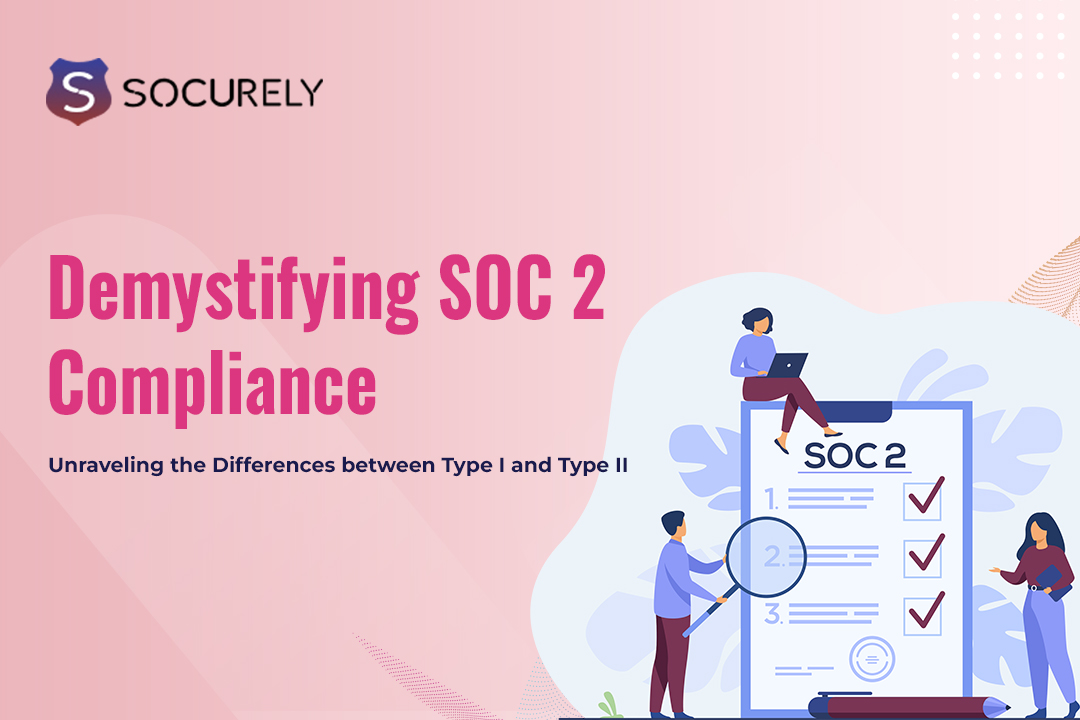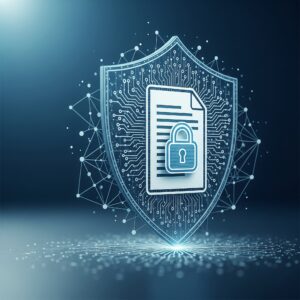In the dynamic landscape of cybersecurity, SOC 2 compliance has emerged as a gold standard, ensuring that service providers securely manage data to protect the interests of their clients. When delving into SOC 2 compliance, understanding the nuances between Type I and Type II is paramount.
What is SOC 2?
SOC 2, short for Service Organization Control 2, is a framework designed by the American Institute of Certified Public Accountants (AICPA) to assess and validate the security, availability, processing integrity, confidentiality, and privacy of information handled by service organizations.
SOC 2 Type I
SOC 2 Type I is the initial step in the SOC 2 compliance journey. It evaluates the suitability of the design of security controls at a specific point in time. The assessment focuses on understanding whether the organization’s systems and processes are aligned with predefined criteria.
This first-level certification essentially answers the question: Are the security mechanisms in place designed appropriately to meet the relevant criteria?
SOC 2 Type II
While SOC 2 Type I assesses the design of security controls, SOC 2 Type II takes a more comprehensive approach by evaluating the operational effectiveness of these controls over a period of around six months.
SOC 2 Type II involves continuous monitoring and testing to ensure that the security controls are not only designed appropriately but are also operating effectively over time. This level of assessment is more rigorous and offers a more thorough evaluation of an organization’s commitment to data security.
Key Differences in Detail
1. Time Frame
SOC 2 Type I
Definition: SOC 2 Type I involves a snapshot assessment conducted at a specific point in time.
Purpose: The assessment aims to understand the design of security controls at the moment of evaluation.
Duration: Typically a one-time assessment that provides a baseline understanding.
Focus: Emphasizes the suitability of the design of security controls at the time of examination.
SOC 2 Type II
Definition: SOC 2 Type II entails an evaluation of controls’ effectiveness over an extended period, usually six months or more.
Purpose: The assessment focuses on both the design and operational effectiveness of security controls.
Duration: Involves continuous monitoring and testing over an extended period.
Focus: This not only examines the design but also assesses how well the controls are implemented and maintained over time.
2. Scope
SOC 2 Type I
Definition: SOC 2 Type I primarily focuses on the design of security controls.
Purpose: Aims to ensure that the organization’s systems and processes are aligned with predefined criteria at a specific point in time.
Outcome: Provides insights into the suitability of the design of controls.
SOC 2 Type II
Definition: SOC 2 Type II evaluates both the design and operational effectiveness of security controls.
Purpose: Assesses how well controls are implemented and maintained over an extended period.
Outcome: Offers a more comprehensive understanding of the organization’s commitment to data security by testing controls in real-world scenarios.
3. Depth of Assessment
SOC 2 Type I
Definition: SOC 2 Type I provides a baseline understanding of security controls.
Purpose: Establishes a foundational level of security by evaluating the design of controls at a specific point in time.
Outcome: Offers insights into the adequacy of control designs.
SOC 2 Type II
Definition: SOC 2 Type II offers a more detailed and comprehensive evaluation by testing controls over time.
Purpose: Ensures that controls are not only designed appropriately but are also operating effectively in real-world scenarios.
Outcome: Provides a higher level of assurance by assessing controls in a variety of situations, offering a more thorough understanding of their operational effectiveness.
Understanding these nuanced differences is crucial for organizations as they decide between SOC 2 Type I and Type II based on their specific needs, compliance goals, and the level of assurance they seek to provide to their clients.
Choosing the Right Fit
The choice between SOC 2 Type I and Type II depends on various factors, including the organization’s specific needs, client requirements, and the maturity of its security program. Some organizations start with Type I to establish a foundational level of security, while others opt for Type II to demonstrate a more robust and sustained commitment to data protection.
Conclusion
In the realm of SOC 2 compliance, understanding the differences between Type I and Type II is crucial for organizations aiming to secure and maintain the trust of their clients. Whether embarking on the initial journey with Type I or aiming for a higher level of assurance with Type II, both certifications play a vital role in fortifying cybersecurity measures and establishing a robust framework for safeguarding sensitive information.
As technology undergoes constant evolution, SOC 2 compliance stands as a cornerstone for organizations dedicated to maintaining the utmost standards in data security and privacy, ensuring a steadfast commitment to safeguarding sensitive information.







